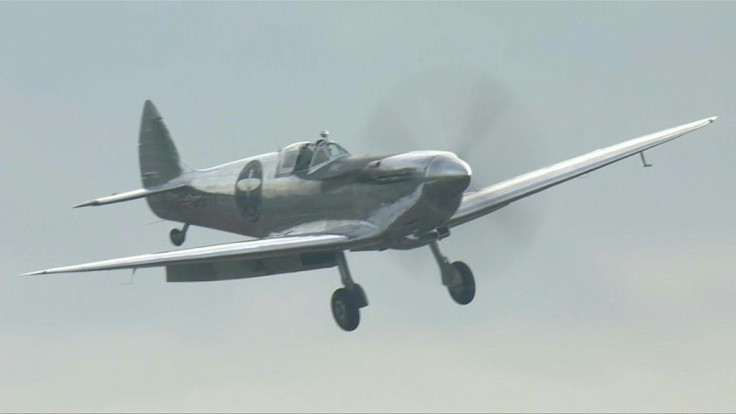Silver Spitfire Back In Britain After Round-the-world Trip
An original Spitfire plane landed back in Britain on Thursday after successfully completing a first-ever attempt to fly the iconic World War II fighter around the globe.
The gleaming silver aircraft touched down on the grass runway at Goodwood Aerodrome outside Chichester, exactly four months after it took off on August 5.
The restored 76-year-old plane, which flew in World War II, visited 24 countries on its epic journey westwards around the world, clocking up more than 23,300 miles (37,500 kilometres).
The aircraft has been de-militarised, stripped of its guns and paintwork, revealing the shining, silvery aluminium underneath.
British aviators Matt Jones, 46, and Steve Brooks, 58, took turns at the controls over 74 legs.
Jones flew the final one-hour, 57-minute journey from Lelystad in the Netherlands back to the Silver Spitfire's home hangar.
The fighter, registration code G-IRTY, did a loop around the White Cliffs of Dover landmark as it reached the English coastline.
It was flanked by two Red Arrows, the Royal Air Force aerobatics display team, trailing white smoke as it approached Goodwood, near the south coast of England.
Jones did a roll and a few flypasts for the onlookers before touching down.
After stepping out of the plane, Jones hugged his partner and their newborn son Arthur. The former banker had to dash home for the birth from Russia during the circumnavigation.
The so-called Longest Flight expedition saw the plane fly over the Statue of Liberty in New York and the Pyramids in Egypt.
The Silver Spitfire traversed the Atlantic Ocean via the Faroe Islands and Reykjavik, crossing Greenland before flying south over the remote wilds of northern Canada.

In the United States it spent two days on a ranch in Texas after the temperature gauge failed mid-flight, and went to Las Vegas and Santa Monica before visiting tycoon Richard Branson's Virgin Galactic spaceflight project in the Mojave Desert.
After flights around the north Pacific Rim through Canada, Alaska and Russia, the Silver Spitfire hunkered down in Japan during recent typhoons.
It then flew on to Taiwan, Hong Kong, Vietnam, Thailand, Myanmar and India, bypassing New Delhi because of visibility-reducing pollution.
After stops in Pakistan, the United Arab Emirates, and Bahrain, the longest leg was 830 miles across the Saudi Arabian desert, in a three-and-a-half-hour flight from Kuwait to Aqaba in Jordan.
It then returned to Britain via Egypt, Greece, Italy, Germany and the Netherlands.
Of around 20,000 Spitfires built, fewer than 250 survive, with only 50 or so of those still airworthy. They rarely fly and are mostly based in Britain.
A design classic with elliptical wings, the outline of a Spitfire is instantly recognisable.
G-IRTY, original registration MJ271, was built in Britain in 1943 by Vickers Supermarine.
The Mk.IX Spitfire flew on 51 combat missions, escorting bombers, conducting fighter sweeps over France and dive-bombing targets on the French coast.
It was in storage in a Dutch museum before its restoration began in 2017.
All 80,000 rivets and parts were dismantled, checked, cleaned and restored over two years.
Having stripped the paint off, they decided to leave the gleaming original aluminium panels on show -- something never done before.
© Copyright AFP 2024. All rights reserved.





















